How to fill small gaps, seams and cracks when carrying out repair work in the bathrooms and other rooms with high humidity? How to make sealed various connections and joints so that they can be withstanding temperature and shrinkage deformations without any problems? The answer is simple: you need a modern sealant
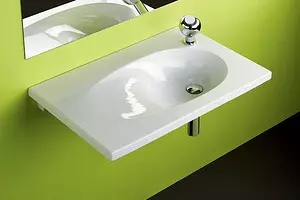
How to fill small gaps, seams and cracks when carrying out repair work in the bathrooms and other rooms with high humidity? How to make sealed various connections and joints so that they can be withstanding temperature and shrinkage deformations without any problems? The answer is simple: you need a modern sealant
The sealant is called a viscous composition based on polymers, which vulcanizes (cured) in air at ambient temperature 5-40 s and forms an elastic, resembling rubber material. They fill the joints between adjacent elements of structures so that they effectively perform their functions under certain conditions: on the street or indoors, in rooms with a normal or high humidity of IT.D. After all, joints are the most vulnerable components of any structure. Therefore, the sealants are presented the following requirements: good adhesion to various materials, simplicity of use, small shrinkage, rapid curing, strength, moisture resistance, resistance to deformations and temperature drops, maintainability.
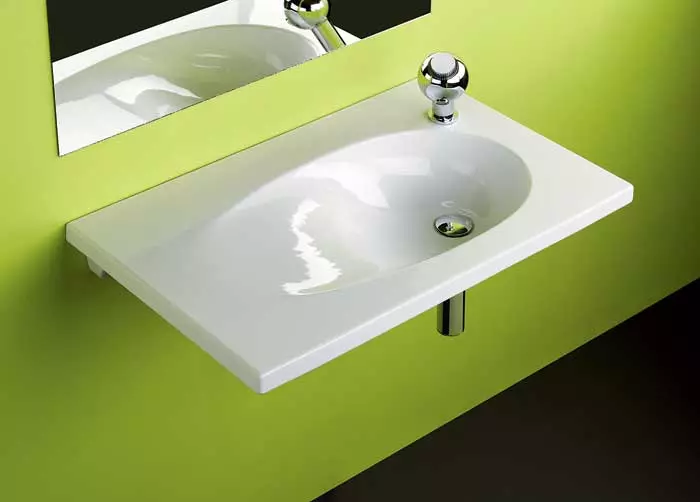
| 
| 
| 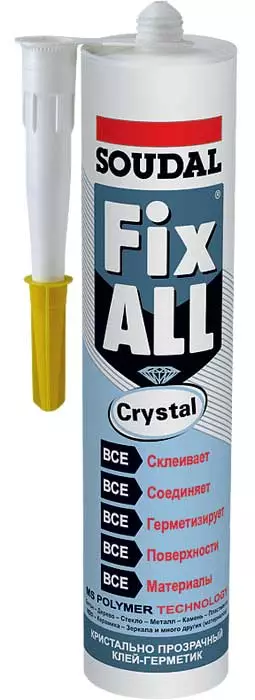
|
Among the manufacturers of sealants are known: "Gepol" (trading brand "Tiksoprol"), "Hermetic-Trade", "Iso Kemikals", "Lacra" (trademark Krass) (all - Russia); Soudal (Belgium); Kleo, Matequs (both - France); OU KRIMELTE (Brand Penosil, Estonia); Selena (Poland); DEN BRAVEN (Netherlands); Henkel (Makroflex trademarks, "moment"), Baumax, Chemlux, Kim Jarolim (all - Germany); Quilosa (Spain); Sika (Switzerland); DAP (USA). The vaseline of each manufacturer is presented products of different types and various purposes. The sealing mass is packaged in tubes and cartridges equipped with dosing nozzles, volume 85, 260, 280, 290, 300, 310, 460 and 600 ml. Separate types of sealants are supplied in plastic or metal buckets weighing 12-33kg.
Opinion of a specialist
For the prevailing part of buyers, the main criterion for choosing sealant is often not properties, but a low price. However, it indirectly indicates a high content in the sealing material of various fillers and, as a result, low quality and low service life. Incase silicone sealants The amount of pure silicone is not lower than 80-85%, and their expiration date is 25-30 years. The shortest of the cheapest this figure reaches only 40%, and they serve as best for 5-7 years. The assortment line of each type of sealant in large manufacturers includes several materials: from elephant to high-quality products for special applications. When choosing, it is necessary to be guided by the Rule of Golden Mid and use in wet rooms not the most expensive, but not the cheapest means, such as the silicone sealant ISOSIL S205 (acid vulcanization) or Isosil S208 (neutral vulcanization).Igor Sazanov, General Director
Companies "Iso Kemikals"
In the world of hermetic
Depending on which polymer is used as a basis, sealants are divided into several types. Each of them has its own "niche", or the scope, where the set of individual properties is most effective when solving a specific task.
Silicone Sealants have a wide scope of application. This use seams in rooms with high humidity, in various window structures, carry out structural glazing, installation of polycarbonate and wall panels, compact construction seams. These sealants of moisture resistant, elastic (they preserve this quality even during long-term operation), resistant to UV rays, have a large range of operating temperatures. However, there are materials to which they have insufficient adhesion, such as plastics.
Polyurethane Sealants are used mainly for external work - when processing joints of building structures, roofs and foundations. They are durable, elastic, perfectly tolerate vibration and deformation, gas-tights, characterized by good adhesion to concrete and other materials, corrosion racks. However, polyurethane-based sealants are unstable to UV rays and high temperatures.
MS-polymer Sealants can be considered universal. They possess the best qualities of silicone and polyurethane, but devoid of their flaws. You can apply them to a wet surface.
Acrylic Sealants are most often used indoors, in sedentary compounds: in the creams between concrete or stone surfaces, in the structures of wooden, metal and plastic window blocks (as an inner vapor insulation layer), between the door jam and the wall, in the cracks of the fused boards or wooden panels.
Bituminous Sealants are suitable for sealing and filling the cracks in the roof, drainage systems, chimneys, as well as for similar works on the base and the foundation. They are characterized by good adhesion to various building materials: bitumens, wood, insulating plates, metal, plastic, concrete IT.D., withstand low temperatures, but high tolerate badly. The color of such sealants is only black.
Polysulfide Sealants are mainly used in panel and block house-building for sealing joints of outdoor wall panels, protecting buildings from moisture and air penetration, heat loss, as well as in the manufacture of double-glazed windows and other designs. They have good elasticity and deformation characteristics, high strength, water, oil and gas bentedness, gas-tightness, but poor adhesion to plastics.
Butyl Sealants have the narrower scope of application: they are ideal for the manufacture of double-glazed windows. These materials are characterized by low moisture gas permeability, high adhesion to glass, aluminum, galvanized steel, resistance to UV radiation. Music of such sealants can be attributed to a low tensile strength at low temperatures.
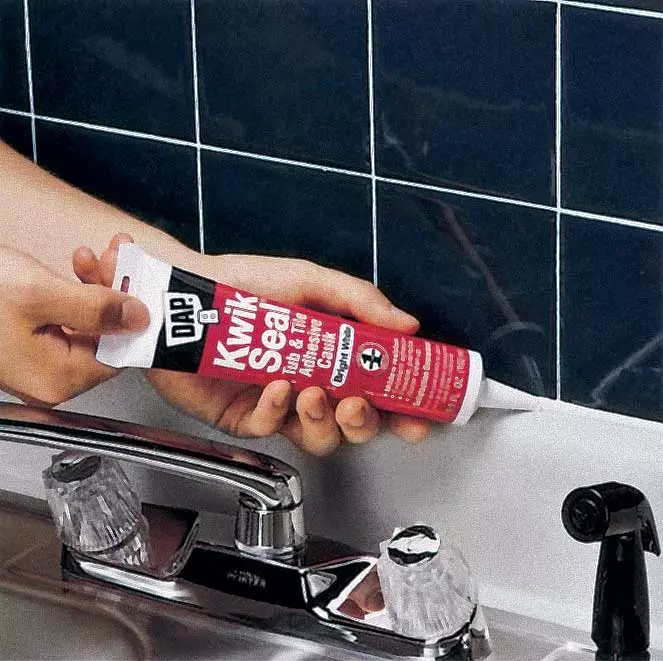
| 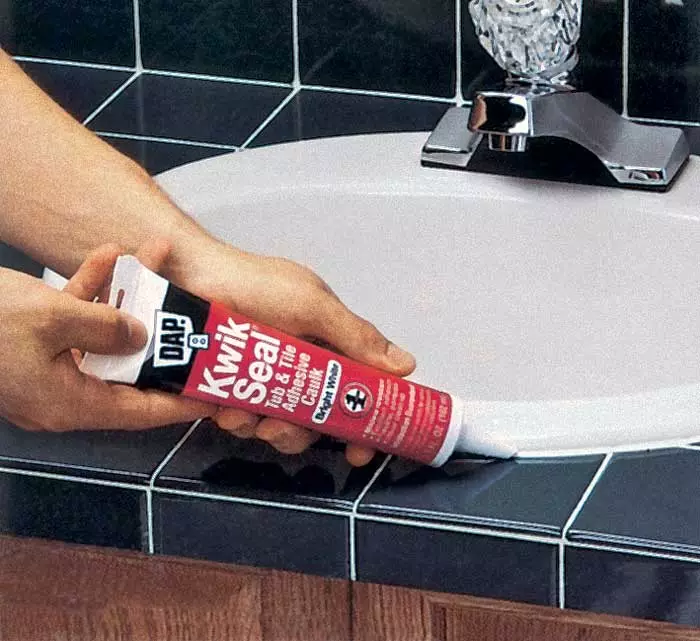
| 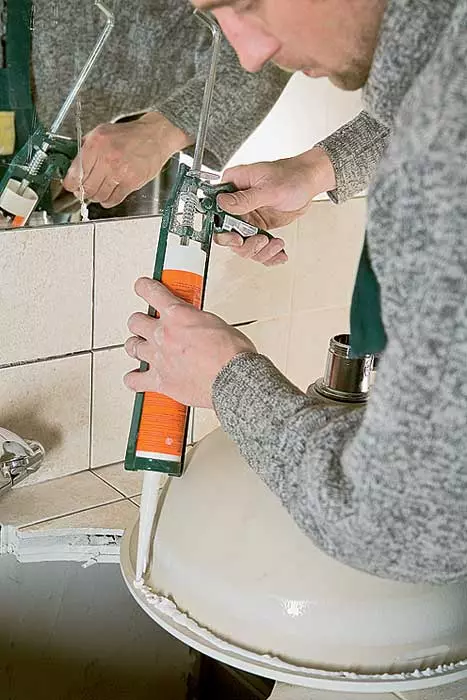
| 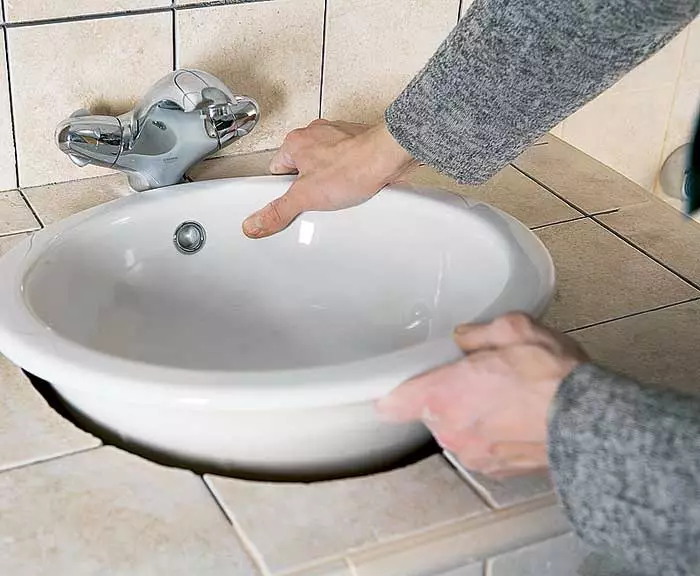
|
5, 6. Multipurpose adhesive sealant KWIK SEAL (DAP) is designed for use in bathrooms and kitchens. It glues like glue, and compacts like a sealant, providing a waterproof seal around the baths, shells, shower cabins and countertops. The cured sealant is elastic and durable, struts to the effects of mold. Its surface is easy to launder with water pollutants with soap. Kwik Seal is painted with latex paints.
7, 8. The side of the sink is rowing with silicone sealant using a plunger construction gun. Then, the bowl is installed on a substole from moisture-resistant drywall, lined with ceramic tiles.
Here is good: warm and damp
It is no secret that in bathrooms, toilets, kitchens are very complex operating conditions for any construction and finishing materials. Here they affect the high humidity, temperature differences, mechanical loads. In addition, these zones must comply with the most stringent hygienic requirements. Therefore, to choose sealants worth it is extremely responsible. However, manufacturers have noticeably simplified this task to us. Calling products intended for wet premises, as a rule, present the word "sanitary". It is these materials that seal joints around the shells, baths, shower pallets, bidets, pools. This service fill the places of compounds and cracks around the built-in miles in the kitchen countertops, suture the seams between the ceramic tiles (especially angular), seal the place of input of ducts and water supply pipes. The overwhelming majority of sanitary sealants are silicone.Opinion of a specialist
Sanitary silicone sealants are designed for wet premises. They prevent the spread of mold and fungi due to fungicidal additives. However, their service life is limited: after a few years, bactericidal properties decrease. Moreover, constant humidity significantly reduces the period of their action. All sealed junctions of plumbing devices with walls should be ashamed. If water is stated on them, it will inevitably lead to the blazing or the appearance of mold. It is not necessary to blame the sealant - this is evidence of bad ventilation. First of all, it is necessary to establish her work or organize forced ventilation, otherwise none, even the highest quality and expensive sealant, will not be able to cope with the colonies of microorganisms.
Roman Rogulin, Technical Specialist Representative Office
Soudal companies in Russia
Acid or neutral?
Silicone sealants are a complex composition based on silicone rubber. All manufacturers unanimously argue that the more its percentage, the better the product properties. However, no packages with a sealant, nor in the technical documentation, this value is not specified (apparently, it is a commercial secret).
The sealant also includes substances that provide strength and thixotropic qualities (thanks to the last sealant does not flow from vertical surfaces), fillers, vulcanizing components, adhesion amplifiers for reliable constant contact with the surface, plasticizers and dyes. By the way, you should not try to paint the hardened layer of silicone sealant - nothing will come. It is painted only in production. Transparent, white, gray, brown and black materials are most popular, but in principle, the color palette includes up to 100 shades.
The reaction of vulcanization of sealants begins after leaving the tube and occurs with the participation of moisture contained in the air. Depending on the type of complex compounds released at the same time, silicone sealants are divided into acid and neutral. Under curing, acetic acid is highlighted, the second is harmless alcohols and water. Sealants of both species have their advantages and disadvantages. Acid possesses better adhesion and cost cheaper, but they cannot be used with materials that react with acetic acid and begin to collapse. The books include non-corrosive metals, mirrors with a thin layer of amalgam, marble, limestone, concrete and cement. The result is obvious: the metals are prematurely corroded, the mirrors are darked and covered with divorces, in places of contact with acidic sealant and alkaline concrete or cement appears a layer of powdered salt that prevents adhesion. The surfaces of these materials are ideally in contact with neutral silicone sealants. Distinctive qualities of the latter - chemical inertness and higher cost.
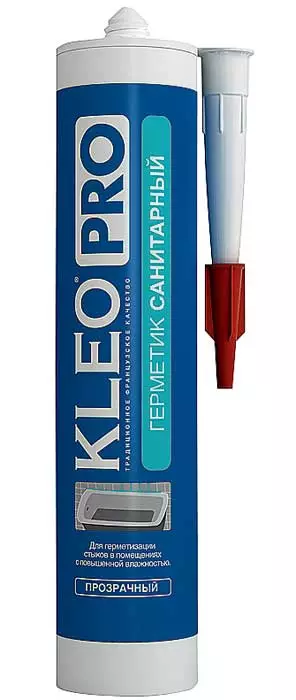
| 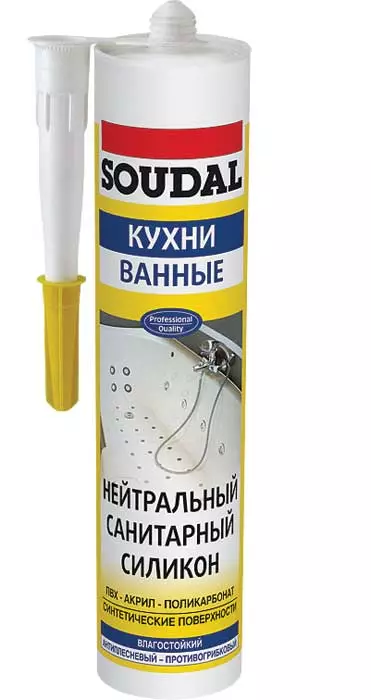
| 
| 
|
9, 10,11,12. Silicone sealant is optimally suitable for sealing and reliable insulation of adjoins and seams in wet rooms. Most Respired Places: Bath / Shower Pallet - Wall; Sink - wall; Paul - wall. Requirements for sealing of joints of two walls, ceiling and walls, toilet and floor less strict, but here Silicon will not be superfluous.
Preparing "Soil"
The sealing process (however, as any other repair work) begin with the preparation of associated surfaces. They are purified from old layers, dirt, dust and degrease. It is desirable to do this on the day of sealing. When using silicone, polysulfide, acrylic, butyl sealants, seams and cavities are not only purified, but also dried. It is undesirable to use soap water or detergents, since their remnants worsen adhesion. Old sealants and other contaminants are removed from concrete and stone surfaces with a wire brush, and, if necessary, use special solvent and cleansing compositions. Metal, glass and plastic are wiping with alcohol-containing liquid or solvent, whose remnants are wiping dry with a napkin. In order to protect the sections adjacent to the seal-sealing seams, use the adhesive tape. She is removed immediately after the end of the work.
The processed surfaces should not be too cold or hot. The optimal temperature range is 5-40 C. Tuba with sealant It is advisable to heat to room temperature. The method of extrusion depends on the type of packaging. The sealant appears from a cut tip after compressing a tube or when using a special "skeletal" gun, which is skiing on a tube. It is worth this device at all inexpensive - about 50 rubles. To form a beautiful seam and remove excess material, apply a spatula moistened in water. It is necessary to do this without delay, since the film on the surface of the sealant is formed quite quickly - in 5-30 minutes in different compositions. The average speed of curing of this material is 2-4mm per day at a temperature of 20 s and humidity of 50%.
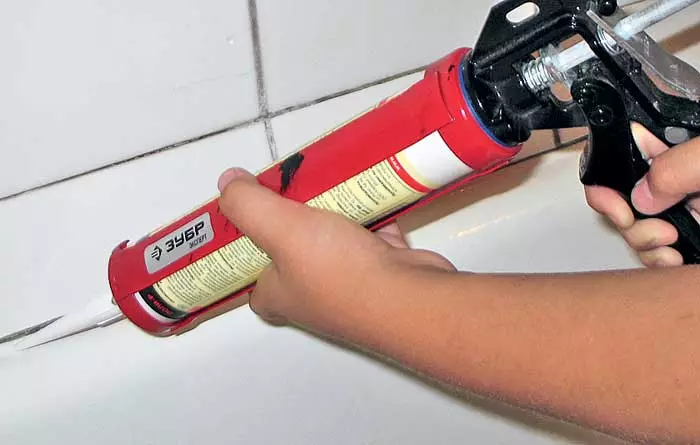
| 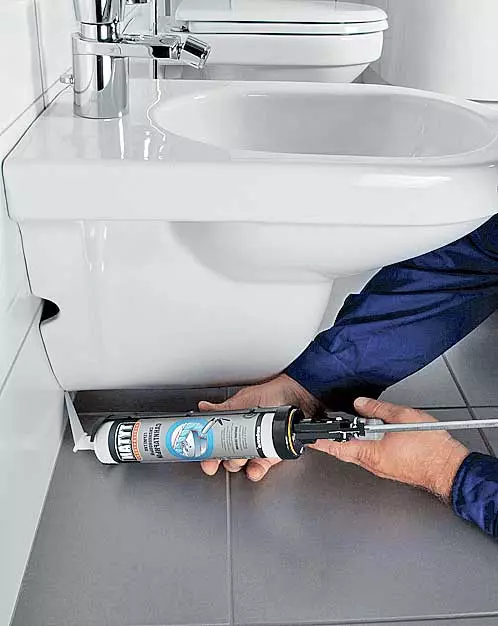
|
13. Calculation of the consumption of sealant. The consumption of sealant (in milliliters to 1m length) is determined by the size and configuration of the seam. With a rectangular section, it is equal to the width multiplied by depth (both parameters are measured in millimeters). For example, if the depth and width is 10 mm, the flow rate will be 10x10 = 100 ml per 1 m seam. If the seam has a triangular section, the flow will be equal to 1/2 width multiplied by depth. So, with width and depth 10mm, the flow rate will be 0.5x10x10 = 50 ml per 1M seam. To squeeze the optimal amount of sealing material, the tip of the cartridge should be cut off at an angle of about 45.
14. Even in a relatively dry bathroom, it is better to use a sanitary silicone sealant, for example, to handle a toilet joint and lined with ceramic tiles of walls or floors.
Miser pays twice
One of the most important issues - how not to be mistaken, choosing a sealant for wet premises? First of all, locate the manufacturer's recommendations on the packaging. It should be indicated that this product is intended for sealing seams and compounds in rooms with high humidity: bathrooms, kitchens, baths, shower, IT pools. Often buyers, seeing the word "sealant" on the package, believe that this is enough. Then how best is to select sealant for a specific construction task.Do not chase for cheapness: It is hardly worth expecting that the most inexpensive products will have high quality. After all, manufacturers often achieve a low cost, introducing fillers and plasticizers into the sealant, which worsens its properties. Experts believe that quite acceptable (average) price for a tube of 300 ml is 120 rubles.
In addition, it is worth purchasing products of well-known brands and manufacturers. Information about them is easy to find on construction forums on the Internet. Nevertheless, even after careful analysis of the market, you can encounter a fake. Masters of construction and finishing brigades that constantly work with sealant will easily determine the counterfeit goods in appearance, and the unprofessional make it not easy. Therefore, our last advice is: buy sealants only in specialized stores or large retail chains.
Opinion of a specialist
For the overwhelming majority of sealants during damage to the sealing layer, it is sufficiently slightly cleared the surface and apply a new layer. The feature of silicone sealants is that they cannot be repaired in a similar way: "New" Silicone does not have adhesion to the "old". If the surface of the sealing layer is spoiled, it will have to completely remove and apply the material again. Do it with the help of special cleaners, such as Sili-Kill (Den Braven). First, the silicone layer is cut out with a sharp knife as deep as possible. Then the brush is applied to it the cleaner and are waiting for 20-30 minutes. Softened silicone residues wipe off with a dry cloth. If necessary, the procedure is repeated. The purified surface is washed, dried and proceed to laying a new silicone layer.
Sergey Gritsenko, Product Manager Office
DEN BRAVEN in Russia
